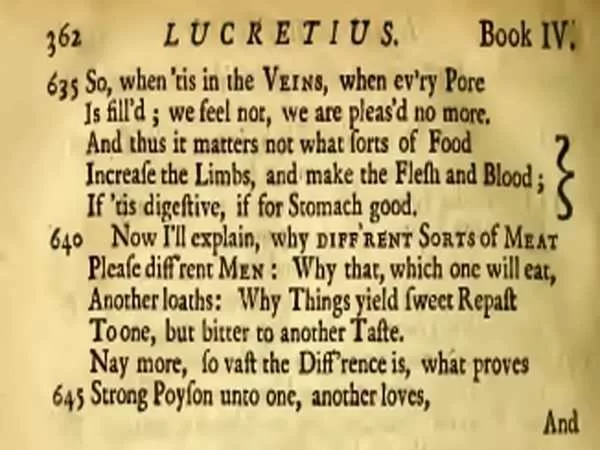From ‘Sweetmeat’ to ‘Scran’: The Fascinating Origins of Food Terms
Food-related words often have surprising origins and unexpected meanings. Take, for example, the term “sweetmeat.” Today, it might conjure up an image of candied fruits or sugary confections, but this word, much like “meat” itself, has a far more interesting history. Let’s dive into the past and explore the curious etymologies of food words like “sweetmeat,” “shambles,” and “scran,” as well as the surprising cultural stories behind them.
Sweetmeat: A Delicate Misnomer
The word “sweetmeat” comes from the combination of “sweet” and “meat.” While “sweet” is straightforward, the “meat” part requires further explanation. In earlier times, “meat” referred to any kind of food, not just animal flesh. The word’s roots are found in several languages: Gothic “mats,” Old Norse “mata,” Anglo-Saxon “mete,” and Old High German “maz”—all of which mean “food.” This broader meaning persisted for centuries, which is why the Bible says, “And it came to pass, as Jesus sat at meat in the house” (Matthew 9:10). The use of “meat” to refer to general sustenance is also evident in the phrase “meat and drink,” which suggests intense enjoyment. As John Frith wrote in 1533, “It is meat and drink to this child to play,” highlighting how play could provide as much joy as food and drink.
Kenelm Digby, an English courtier, alchemist, and cookery book author, often used “sweetmeat” in its two-word form, indicating sweet foods such as candied fruits or confections that were highly prized in the culinary traditions of the time.
From Meat to Mincemeat: Not Always What You Think
“Mincemeat,” which we associate with Christmas pies, reflects this older meaning. Historically, mincemeat referred to minced food, not necessarily minced “meat” in the modern sense. Some older recipes did include meat, but many, like those in the first English cookbook, The Forme of Cury (circa 1380), used ingredients like thickened milk, sugar, pine nuts, dates, cinnamon, ginger, and rose petals. The method of mincing or chopping fine was applied to both sweet and savory dishes, reflecting the broad culinary use of the term “meat.”
Shambles: From Butcher’s Stall to Chaos
The term “shambles” has an interesting evolution, too. It originally referred to a bench or stool used by butchers to display their goods. Derived from the Old Norse word “skemill,” which meant a stool or bench, the English term “scamble” transformed into “shamble,” which eventually became associated with the butchers’ stalls found in marketplaces.
The famous Shambles in York, England, retains this historical connection, where butcher shops were once so numerous that the street became synonymous with slaughter. The mess from the cutting of meat, blood, and offal led “shambles” to acquire its modern meaning: a scene of chaos or disorder. Hence, if your house is “a shambles,” it looks as messy as a butcher’s stall! And if someone “shambles” when they walk, their gait may resemble the awkward, lurching movement associated with dragging heavy loads of meat.
Scran: A Mystery Wrapped in Rubbish
The word “scran” is another interesting case. Commonly used in British dialects to mean food, “scran” has mysterious origins. The Oxford English Dictionary (OED) suggests its relation to the Icelandic word “skran,” meaning odds and ends or rubbish, is probably coincidental. However, it may connect to the Dutch “schransen,” meaning to eat greedily or gorge, or to the Irish “scranta,” referring to a part or division. Despite the uncertainty surrounding its etymology, “scran” has been part of English vernacular for centuries, illustrating the fluid and often enigmatic nature of language.
From Old Proverbs to Everyday Speech
Food terms also pepper our everyday speech in surprising ways. Take the phrase “One man’s meat is another man’s poison,” which suggests that what delights one person may repulse another. This phrase traces back to the Roman poet Lucretius in his epic work De Rerum Natura (“On the Nature of Things”), where he wrote, “… so vast the difference is, what proves strong poison unto one, another loves.” The phrase was so popular that by 1604, playwright Thomas Middleton described it as an “old moth-eaten proverb,” underscoring its long-standing presence in English.
Food and Language: A Delicious Journey Through Time
The origins and evolution of these food-related terms reveal much about history, culture, and the ever-changing nature of language. From “sweetmeat” to “scran,” words once bound to specific meanings have transformed and adapted, telling stories of shifting culinary practices, cultural beliefs, and even the messy butcher shops of medieval England. Whether these terms make you hungry or leave you pondering, one thing is clear: our language is as rich and varied as the foods we eat.


















